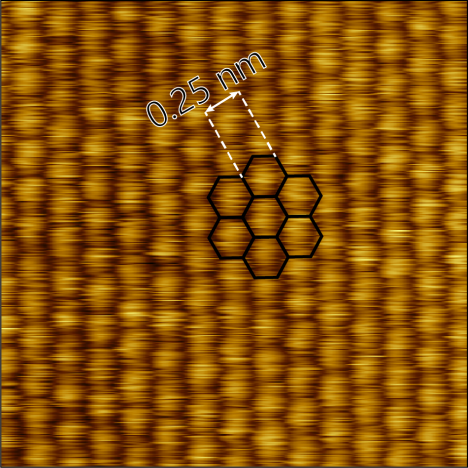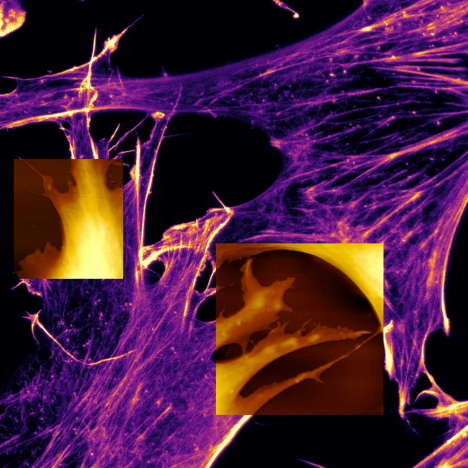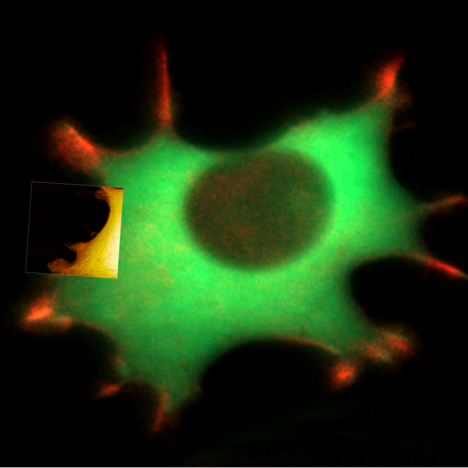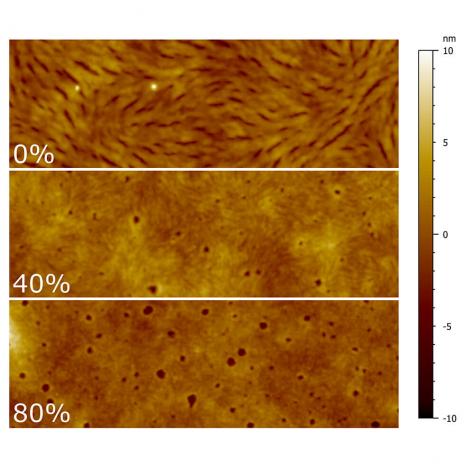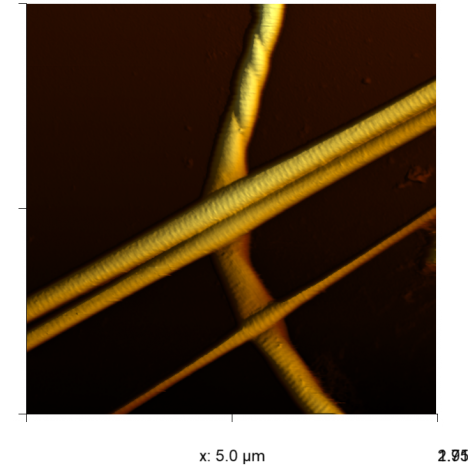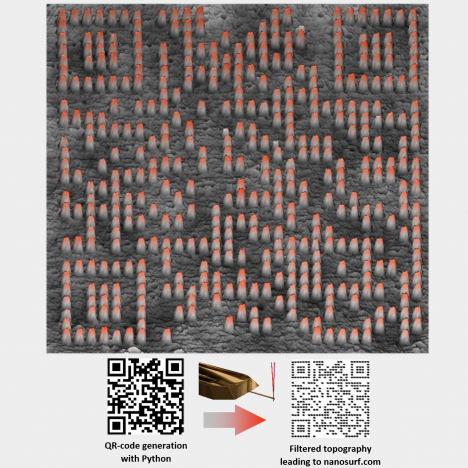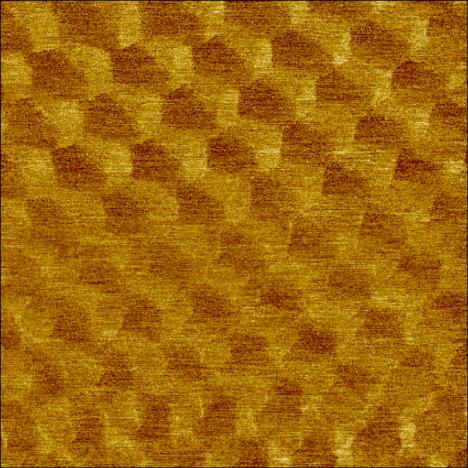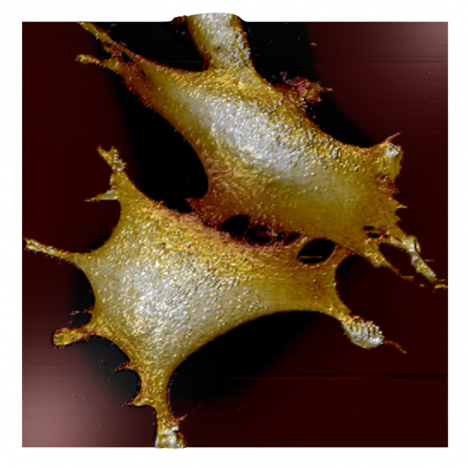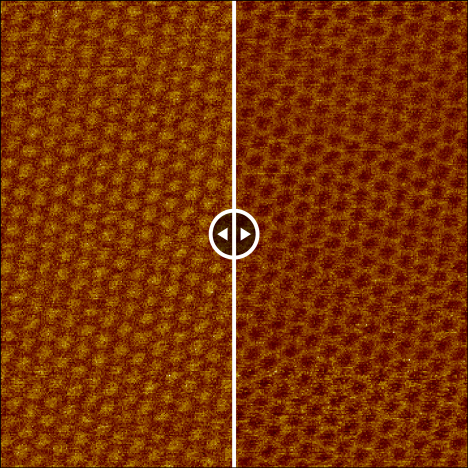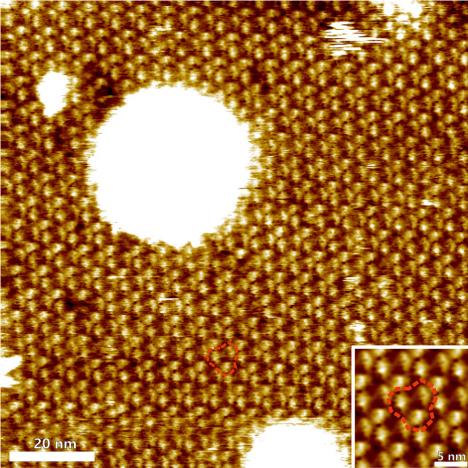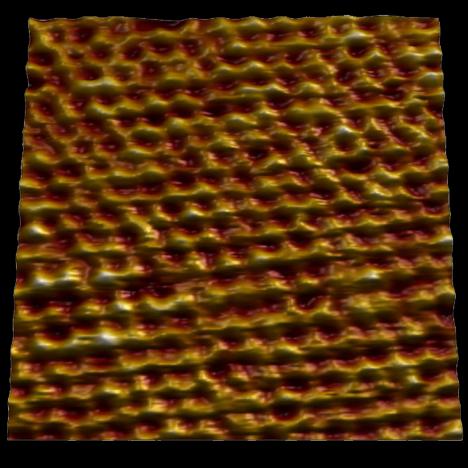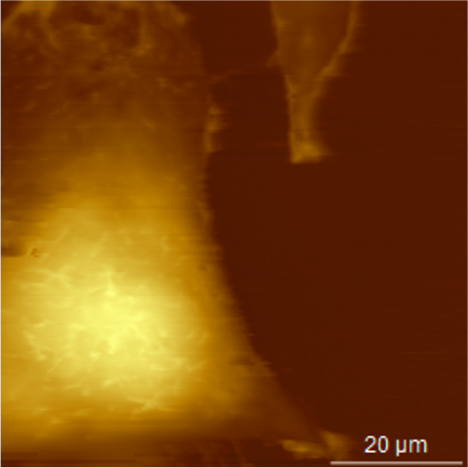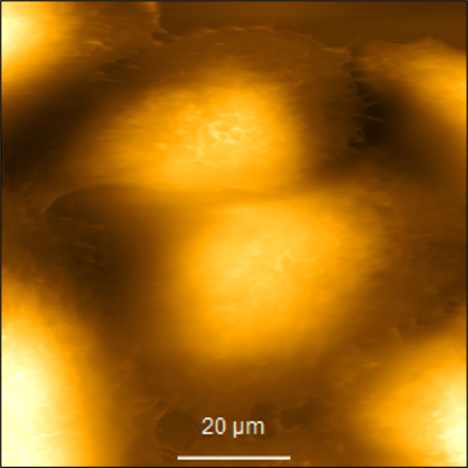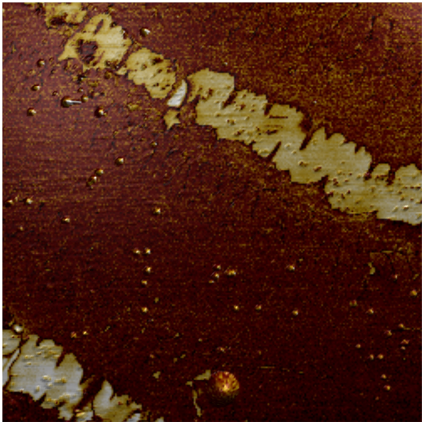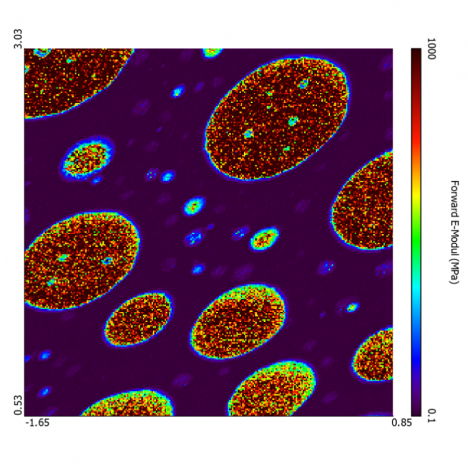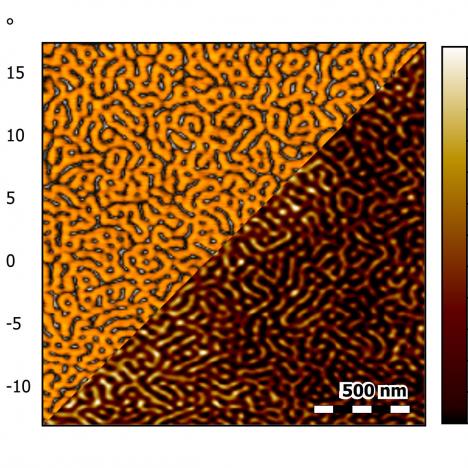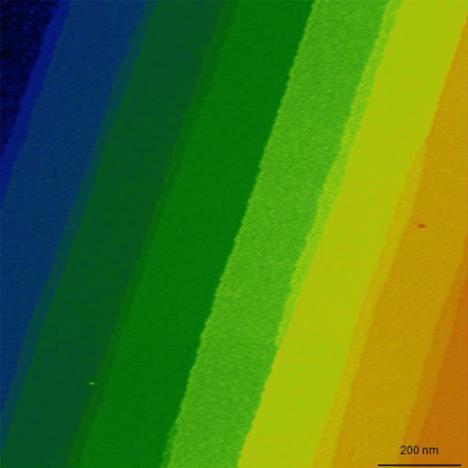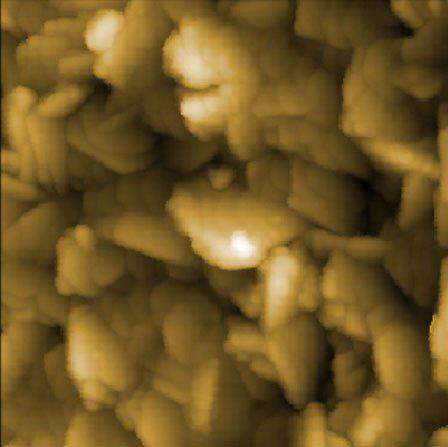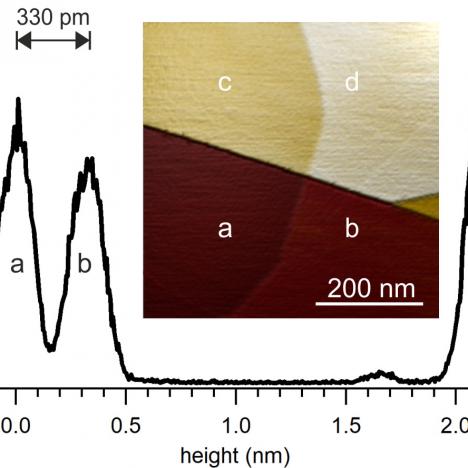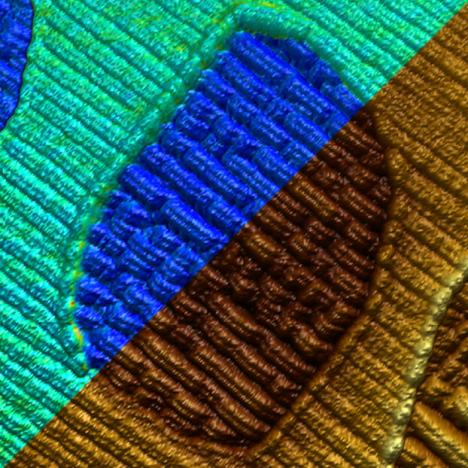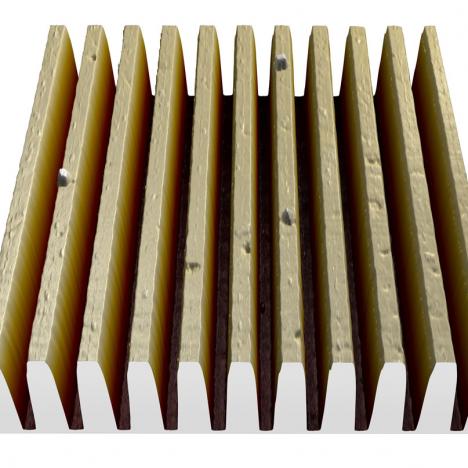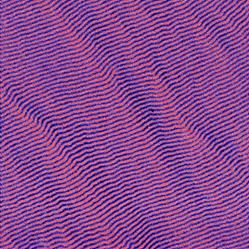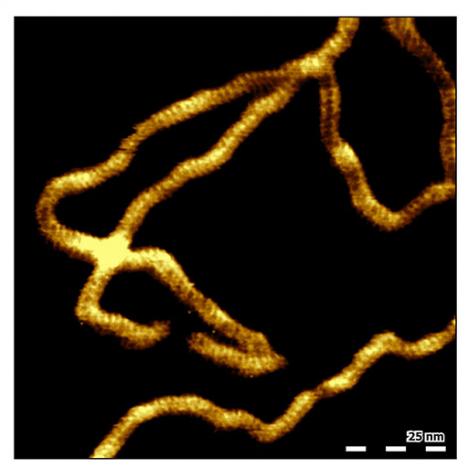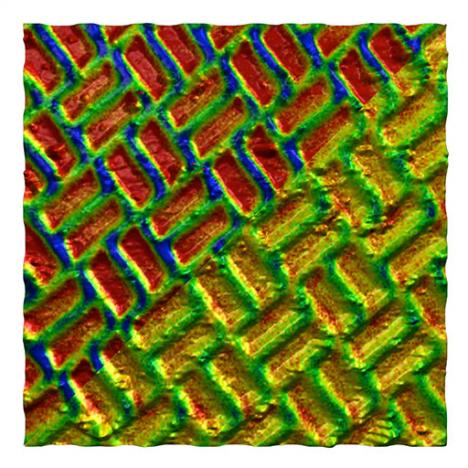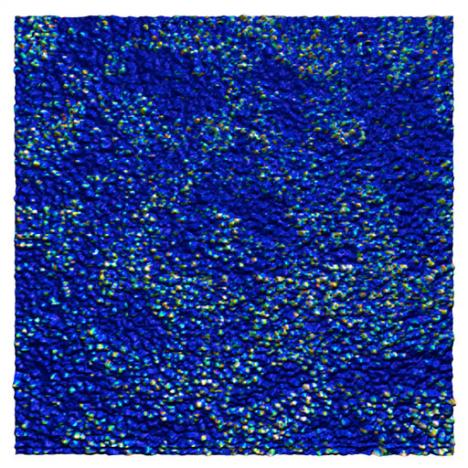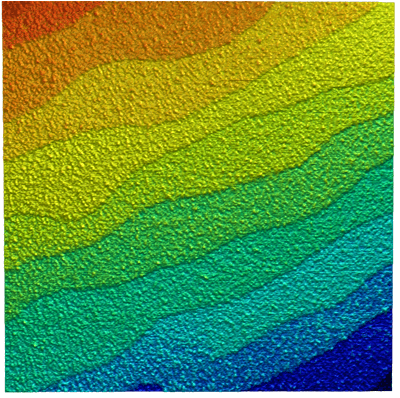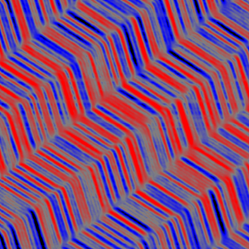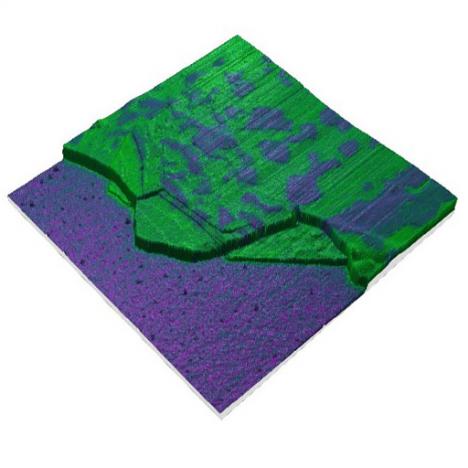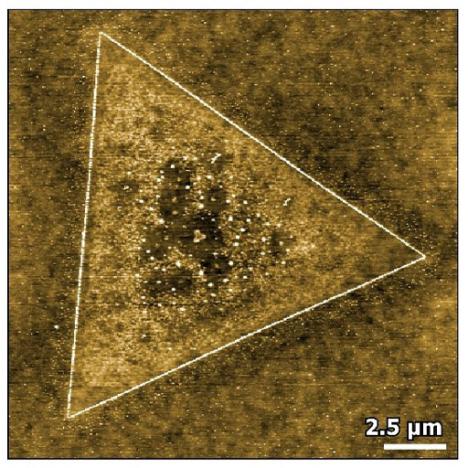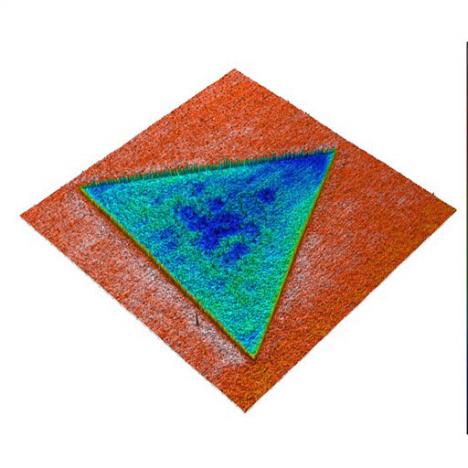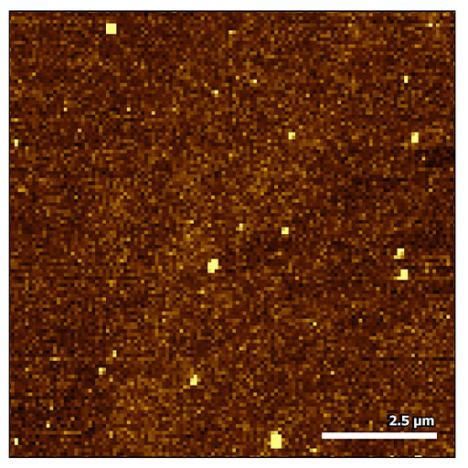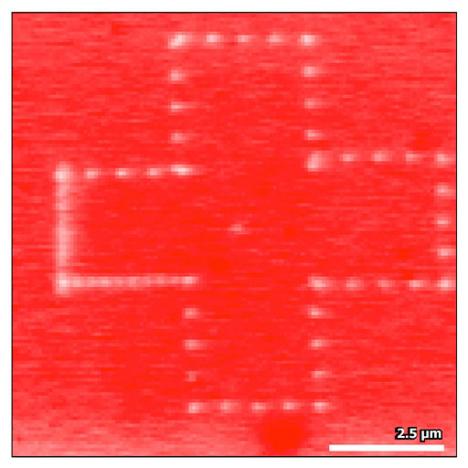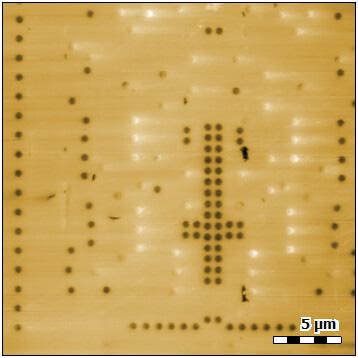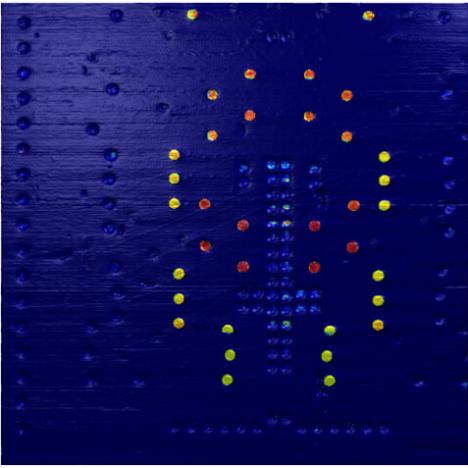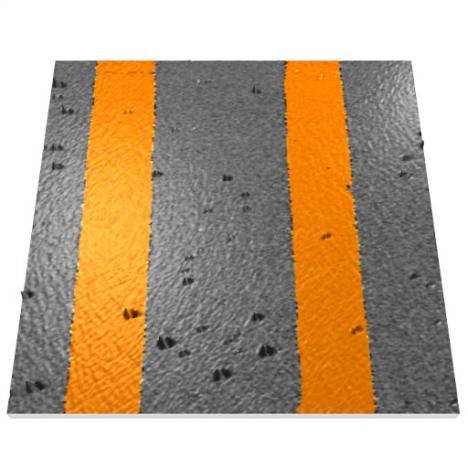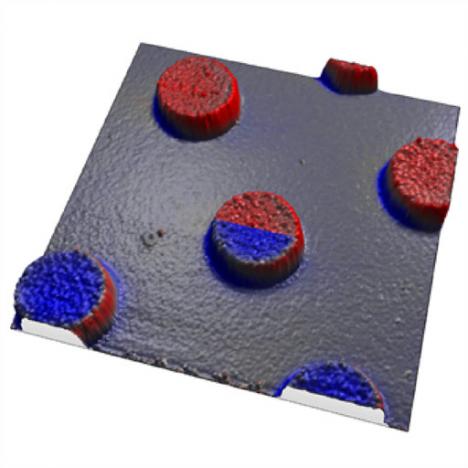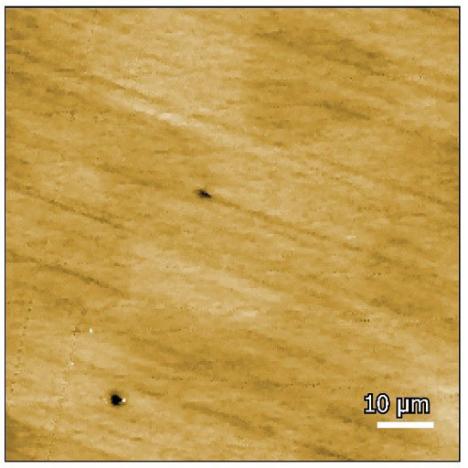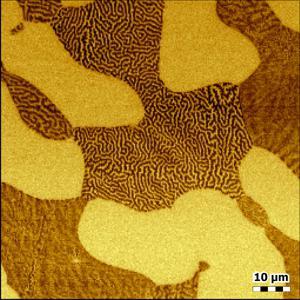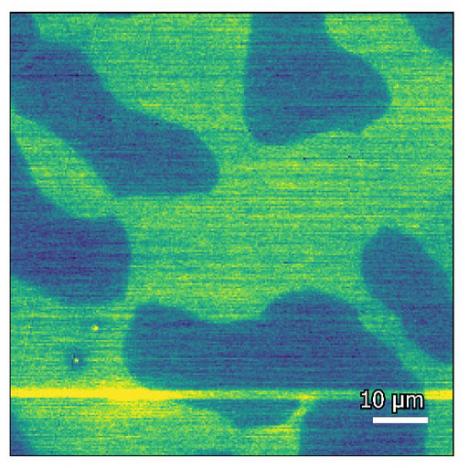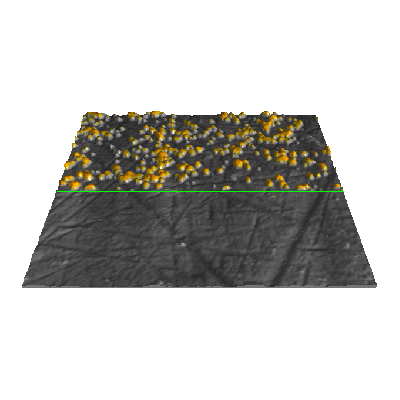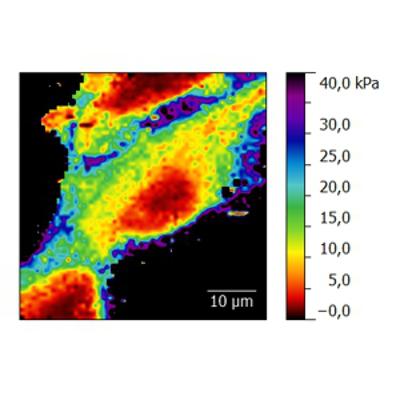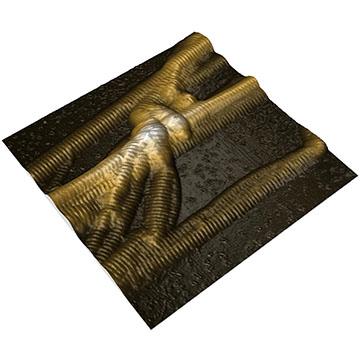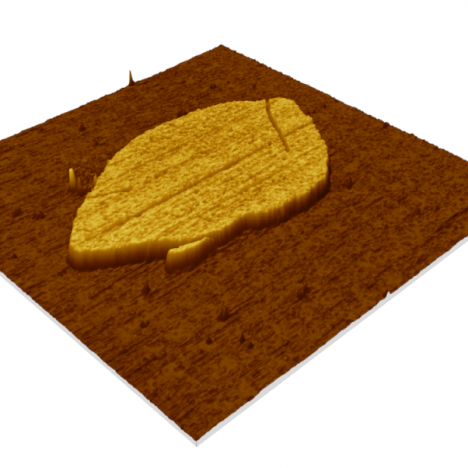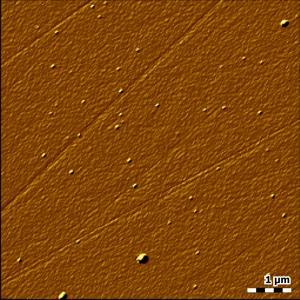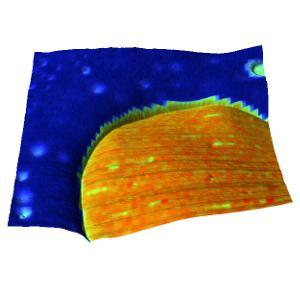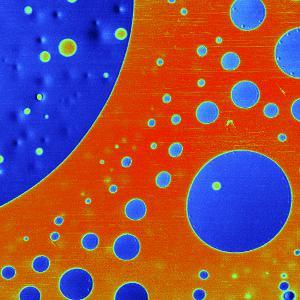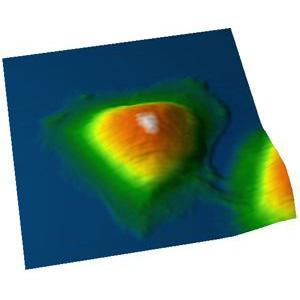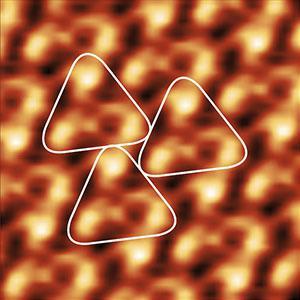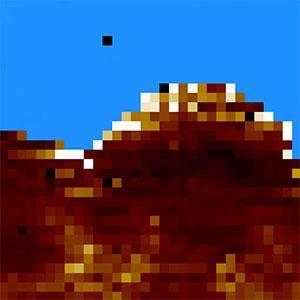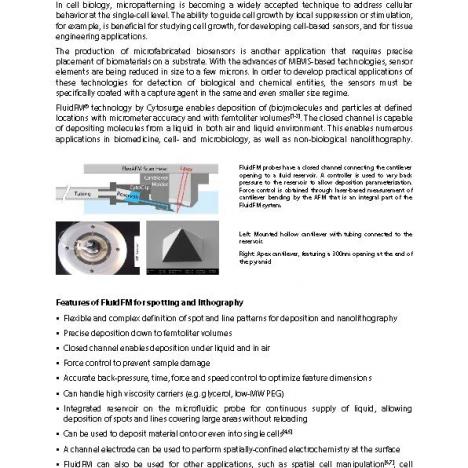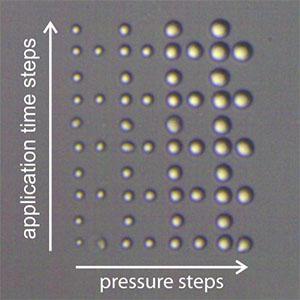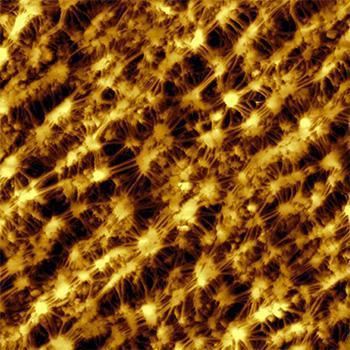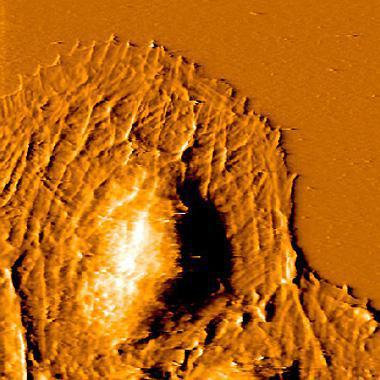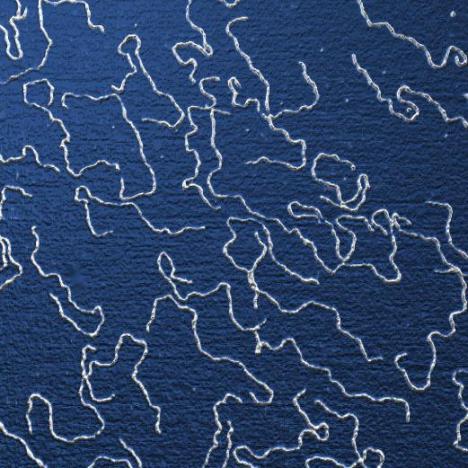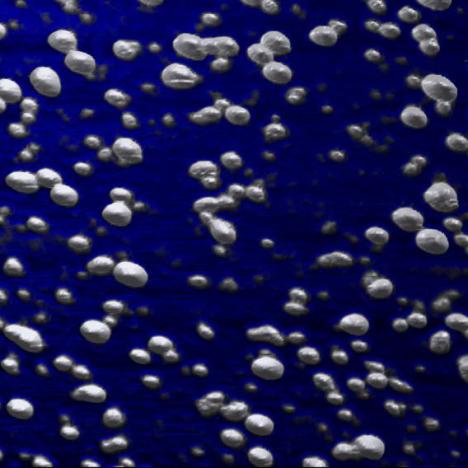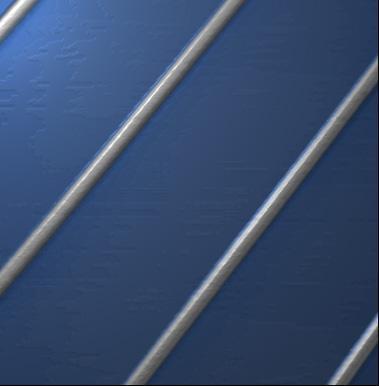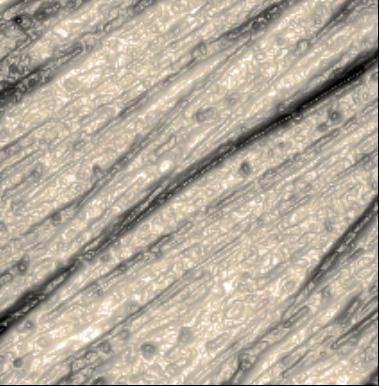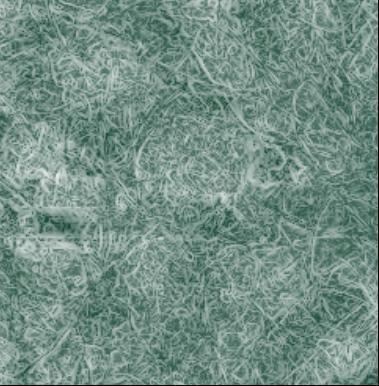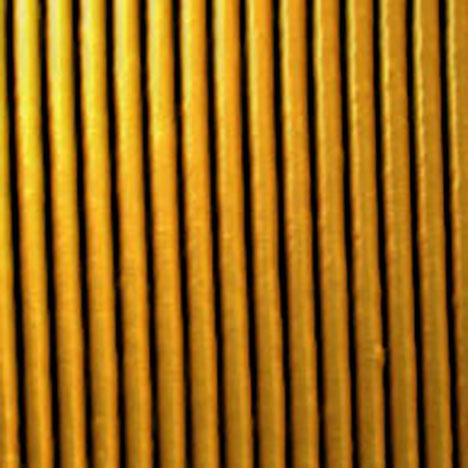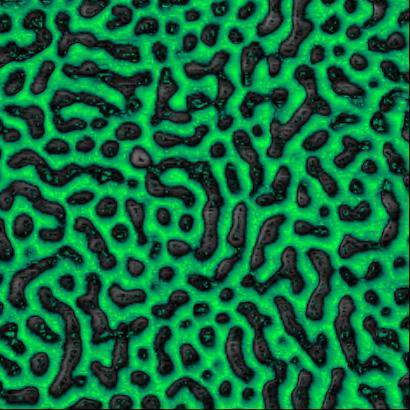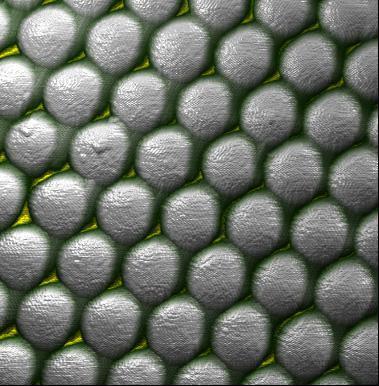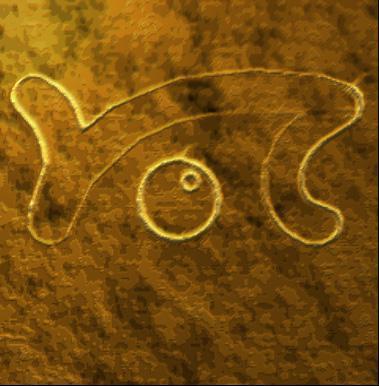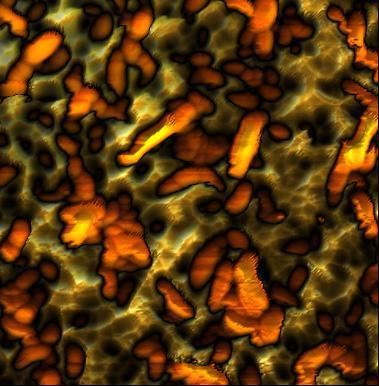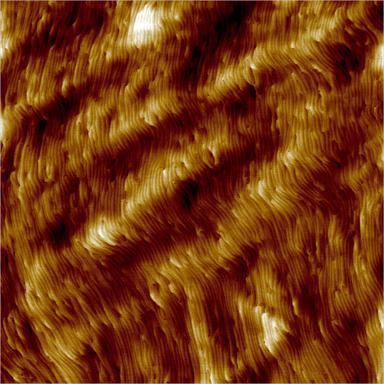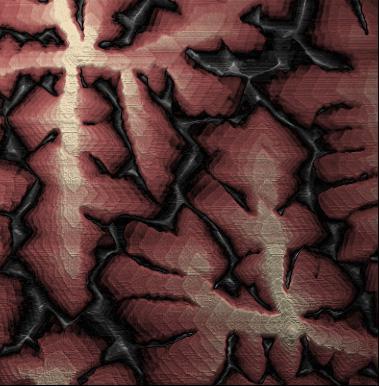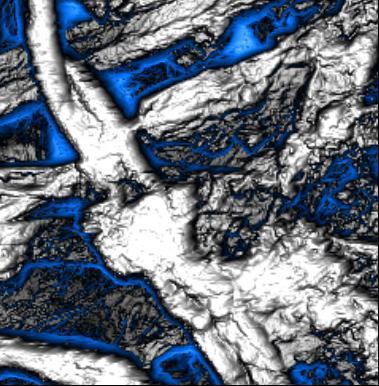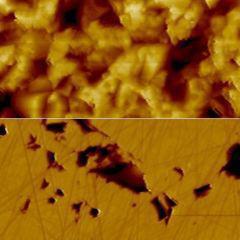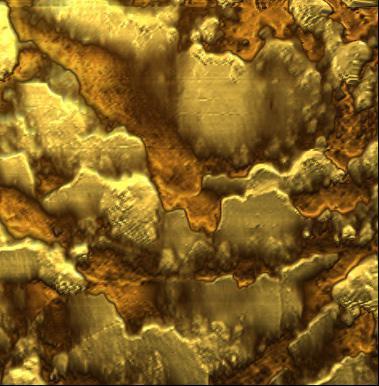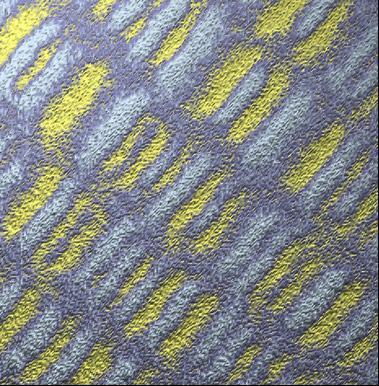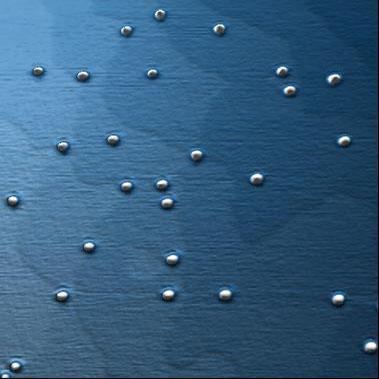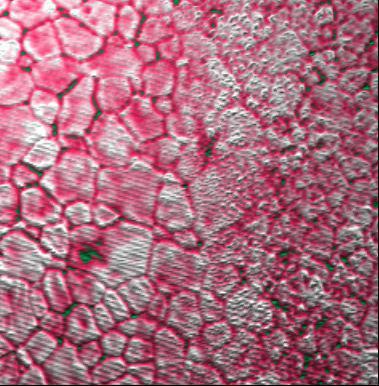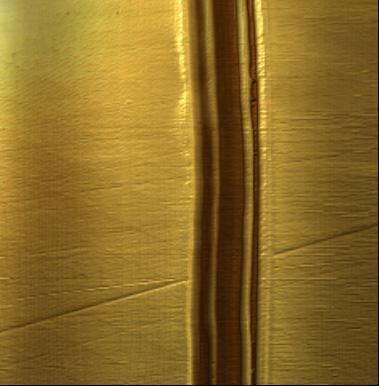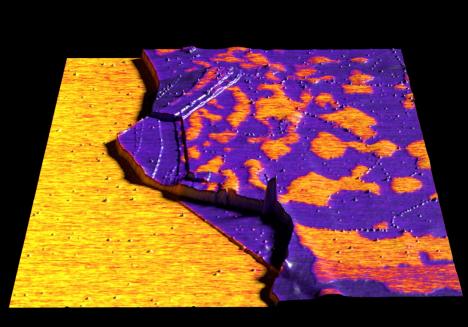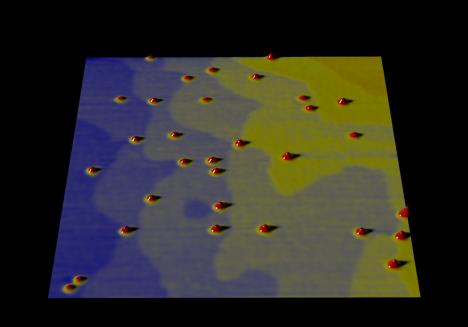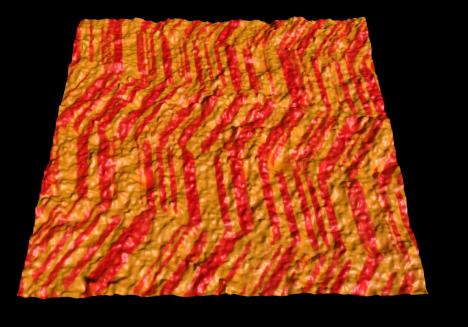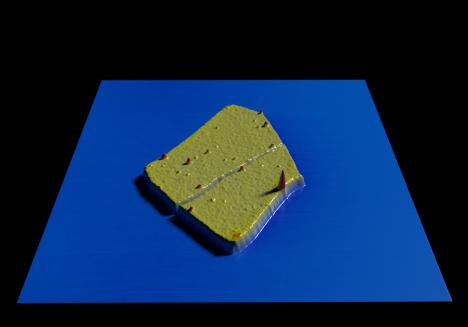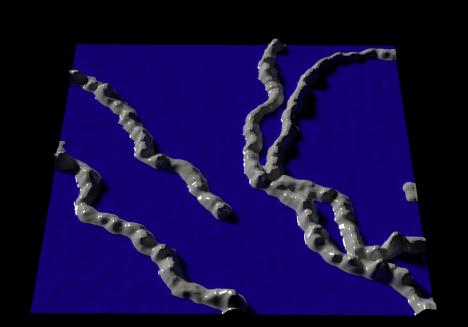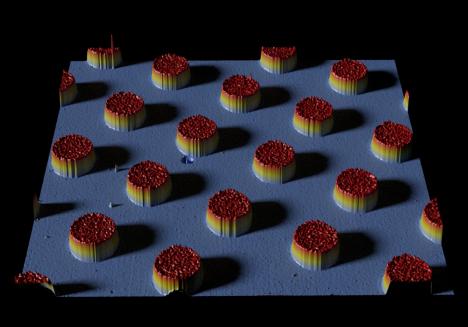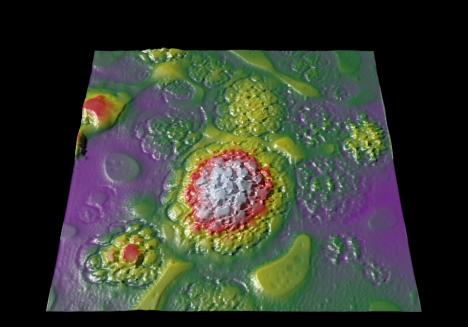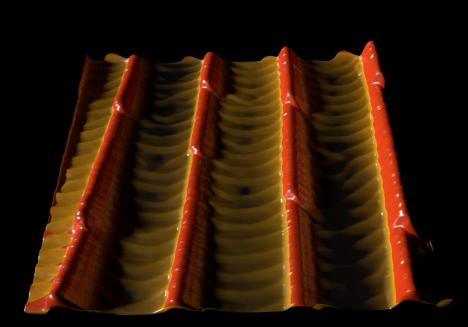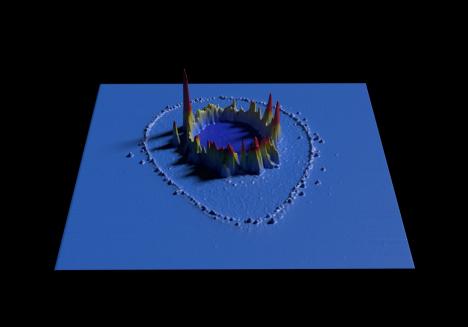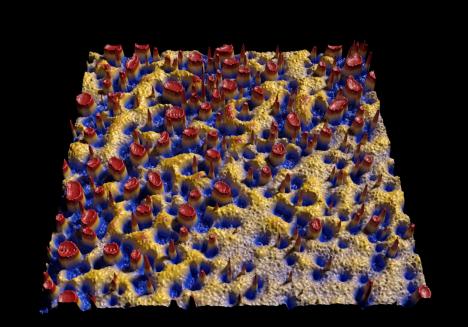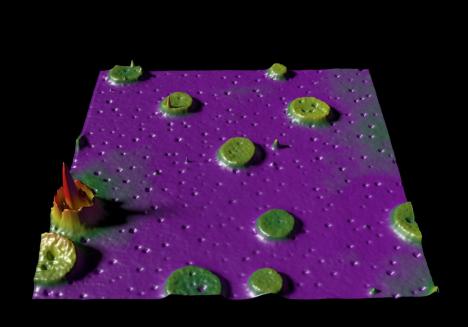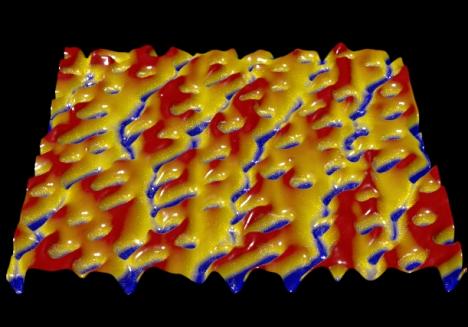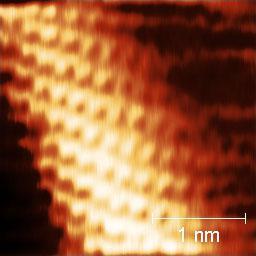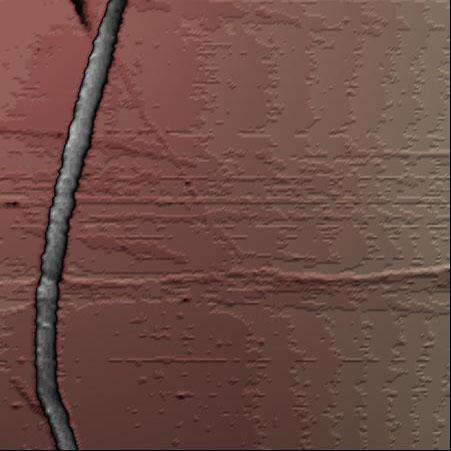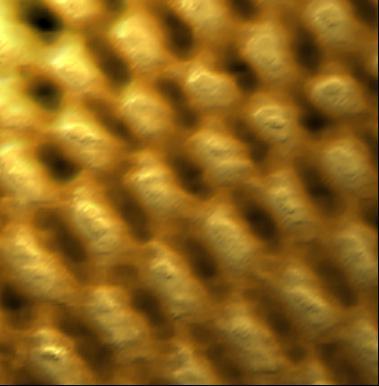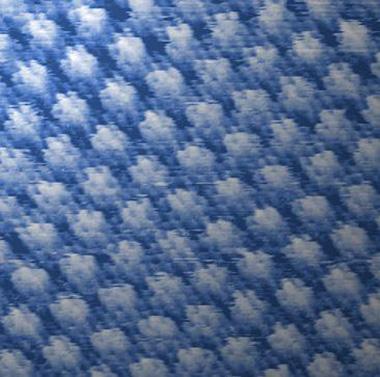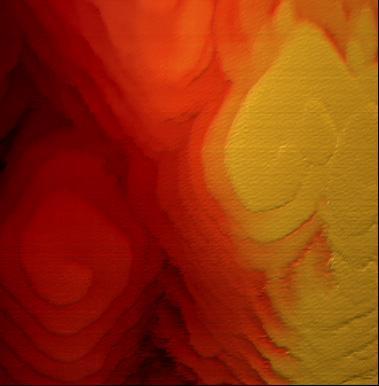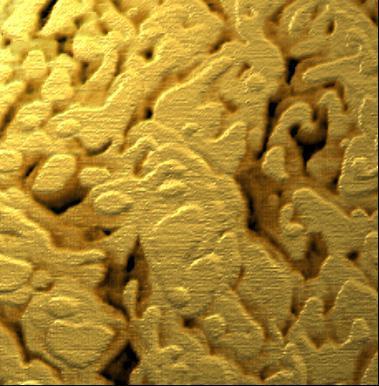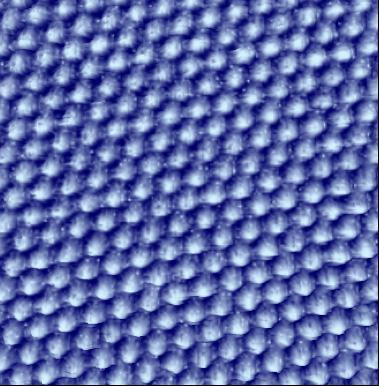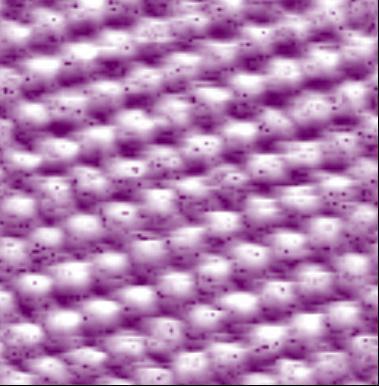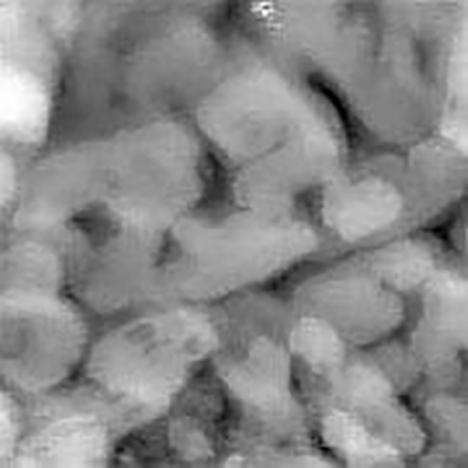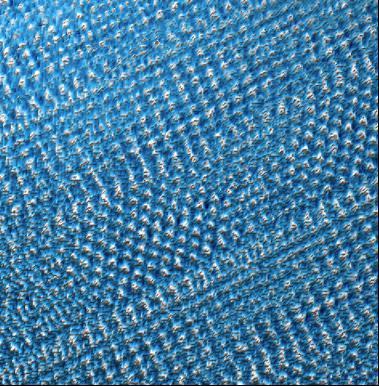Nanosurf AFMs are used for applications ranging from material characterizations to biological samples like live cells. On this page you can browse the gallery of all our published atomic force microscopy images. All AFM images in this gallery were measured with a Nanosurf AFM. For in-depth articles of specific applications, visit the application notes page.
HOPG topography recorded in static mode on DriveAFM
Mouse fibroblasts in cell culture medium
Performing Bio-AFM on live cells
Morphological characterization of various PDINO, TiOx, and PDINO:TiOx blend films
WaveMode image of mouse tail collagen
Thermal Lithography at PVAC thin film
Moiré super lattice of twisted graphene on hBN
Embryonic mouse fibroblasts
Trimeric arrangement of bacteriorhodopsin (BR) proteins and substructures
Cells imaged in medium with photothermal excitation and AC40 cantilever
HeLa cells in culture medium
PFM amplitude on 2D ferroelectric CuInP2S6 on Si
Force mapping on polymer blend (SBS-PS), Hertz model
PS-Pb-PS triblock copolymer thin film on mica imaged at 20 Hz line rate
AFM topography of SiC showing 1.5 nm steps on its surface
TipCheck sample with CleanDrive excitation
Topography of an HOPG surface imaged in air
Atomic grid on mica measured with lateral force microscopy
MFM and topography on artificial spin ice
Quality control of CVD-grown graphene flakes on post-oxidized copper measured by fric...
3D topography of a grating structure with 390 nm deep trenches and an aspect ratio of...
Magnetic force microscopy of thin permalloy film with stripe domains
High-resolution topography image of double-stranded DNA (dsDNA) adsorbed to mica in b...
MFM images of a Shakti lattice
Topography of SrTiO3 in dynamic mode
Magnetic force microscopy of digital backup tape
Topography on multilayer graphene
KPFM on multilayer graphene
Topography of MoS2 monolayer
MoS2 monolayer: 3D topography overlaid with KPFM signal
Topography of locally deposited charges on an insulating oxide surface
KPFM of locally deposited charges on an insulating oxide surface
Topography of an integrated circuit structure with multiple transistor contacts
Conductive AFM of an integrated circuit structure with multiple transistor contacts
Out of plane PFM on Lithium Niobate
Electrostatic force (EFM) measurements on aluminum dots deposited on gold
Topography of polished stainless steel
Magnetic force microscopy on polished stainless steel
KPFM on polished stainless steel
Electrochemical AFM with rod-like samples: Cu deposition on a commercial Pt electrode
Force mapping of living cultured cells
AFM imaging of type I collagen fibrils
Dynamic mode AFM of pyrene nanosheets
Dynamic mode AFM of polished sapphire
AFM force spectroscopy on a polymer blend
AFM phase image of a polymer blend
AFM topography of a living HeLa cell
High resolution imaging of the cytoplasmic side of bacteriorhodopsin
Colloidal spectroscopy with FluidFM®
Single Cell Force Spectroscopy
Spotting and lithography with FluidFM
Topography analysis of ePTFE membrane using AFM
Magnesium fluoride coating
Photoresin Interference Grid
Topography of solar cell layers
Screw dislocations in GaN
Dynamic mode AFM on pentacene film on TiO2
Morphology analysis of paper
Contact mode AFM of polished ceramic plate used in dentistry
Dynamic mode AFM of human hair
MFM of bits on a harddisk
AFM image of quantum dots
AFM images of gold film on ceramic grains
AFM image of butterfly wings
Static force AFM of stainless steel
Graphene imaged in Kelvin probe force microscopy (KPFM) mode
Geobacter bacterium on gold substrate imaged in dynamic force mode
SBS-PS polymer blend imaged in phase contrast mode
Quantum dots on potassium bromide (KBr) imaged in dynamic force mode
Magnetic tape imaged in magnetic force microscopy (MFM) mode
Gold (Au111) imaged in scanning tunneling microscopy (STM) mode
Graphene like C3N imaged in scanning thermal microscopy (sThM) mode
dsDNA imaged in dynamic force mode
Aluminum pillars on gold imaged in Kelvin force microscopy (KPFM) mode
SBRS-PMMA polymer blend imaged in force modulation mode
Mill moth wing imaged in static force mode
Laser ablation crater in TiO2 imaged in dynamic force mode
SBS-PMMA polyer blend imaged in lateral force microscopy (LFM) mode
SBR-PMMA polymer blend imaged in phase contrast mode
DVD imaged in dynamic force mode
SrTiO3 topography measured in dynamic force mode
Scanning tunneling microscopy makes it possible to see individual atoms. Since STM is based on quantum tunneling, where a voltage difference (bias) is applied between the tip and the sample surface, it only is applicable to metal surfaces or other conducting materials. View this gallery of STM images for examples of different surfaces at atomic resolution (single atoms are discernible).
Carbon nanotubes on graphene-silicon carbide
Electrode surface modified with multilayers of Polyoxometalate
STM image of TaS2 surface
Atomic structure of a TiS2 surface
STM study of high temperature superconducting thin films
STM on polished copper surface
STM Study of Evaporated Au (111) Thin Film
STM on HOPG shows atomic resolution
Defects study and atomic structure of MoS2 crystal with STM
Gold surface modification
STM imaging of 2D crystals
STM measurements on microfabricated grid


